#earth atmosphere
Text
Earth is Our Play Pen!
Earth is Our Play Pen!
https://revelatorytruths.blog/wp-content/uploads/2022/04/Earth-is-Our-Play-Pen.mp4
Earth is our Play Pen!
See More “Author Slides““ Here!
Click Title to Open File and then click “3 dot symbol” for Free File Download
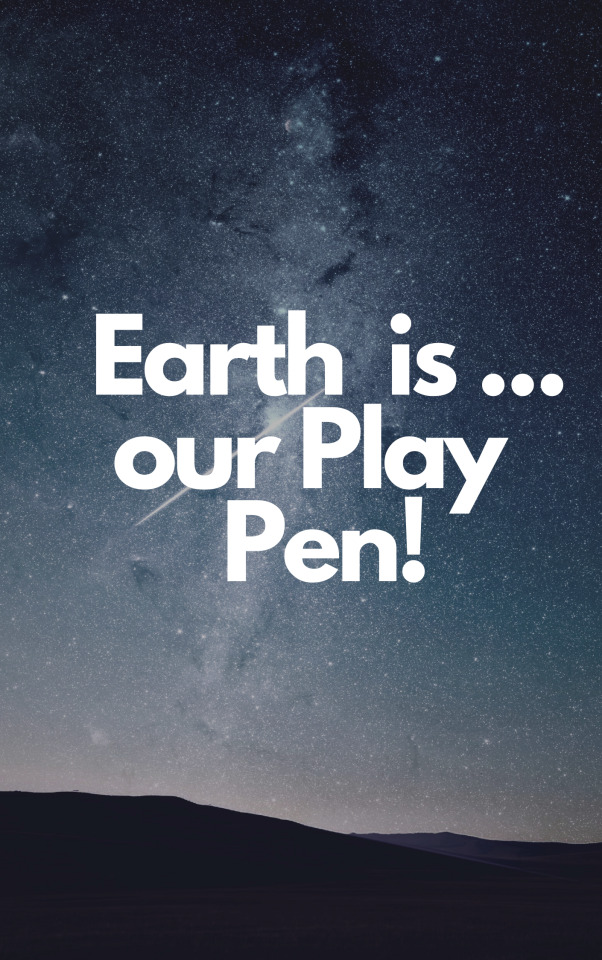
View On WordPress
#Earth Age#Earth Atmosphere#Earth Atmosphere Layers#Earth Circumference#Earth Colors#Earth Crust#Earth Day Activities#Earth Day Quotes#Earth Energy#Earth Explorer#Earth Images#Earth Origins#Earth Radius#Earth Rotation#Earth Science#Earth Signs#Earth Size#Earth Week#Earth Wind And Fire Members#Earth Works
1 note
·
View note
Text

NASA Spotlight: Earth Climate Scientist Dr. Yolanda Shea
Dr. Yolanda Shea is a climate scientist at NASA's Langley Research Center. She’s the project scientist for the CLARREO Pathfinder (CPF) mission, which is an instrument that will launch to the International Space Station to measure sunlight reflected from Earth. It will help us understand how much heat is being trapped by our planet’s atmosphere. Her mission is designed to help us get a clearer picture than we currently have of the Earth’s system and how it is changing
Yolanda took time from studying our home planet to answer questions about her life and career! Get to know this Earth scientist:
What inspired you to study climate science?
Starting in early middle school I became interested in the explanations behind the weather maps and satellite images shown on TV. I liked how the meteorologists talked about the temperature, moisture, and winds at different heights in the atmosphere, and then put that together to form the story of our weather forecasts. This made me want to learn more about Earth science, so I went to college to explore this interest more.
The summer after my junior year of college, I had an internship during which my first assignment was to work with a program that estimated ocean currents from satellite measurements. I was fascinated in the fact that scientists had discovered a way to map ocean currents from space!
Although I had learned about Earth remote sensing in my classes, this was my first taste of working with, and understanding the details of, how we could learn more about different aspects of the physical world from satellite measurements.
This led to my learning about other ways we can learn about Earth from space, and that includes rigorous climate monitoring, which is the area I work in now.
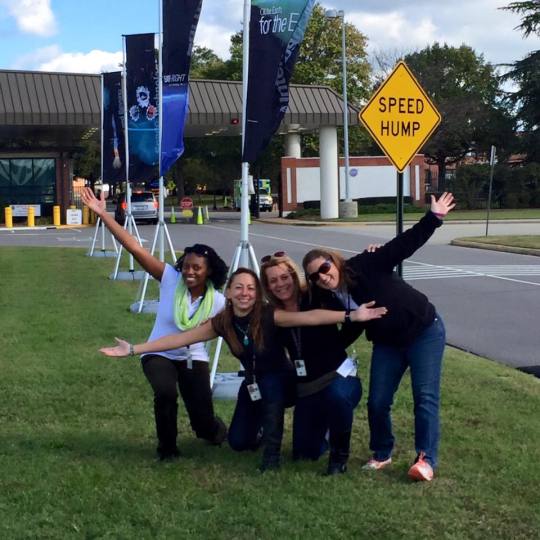
What does a day in your life look like?
Before I start my workday, I like to take a few minutes to eat breakfast, knit (I’m loving sock knitting right now!), and listen to a podcast or audio book. Each workday really looks different for me, but regardless, most days are a combination of quieter moments that I can use for individual work and more interactive times when I’m interfacing with colleagues and talking about project or science issues. Both types of work are fun in different ways, but I’m glad I have a mixture because all researchers need that combination of deep thinking to wrap our minds around complex problems and also time to tackle those problems with others and work on solving them together.
When do you feel most connected to Earth?
I’ve always loved sunsets. I find them peaceful and beautiful, and I love how each one is unique. They are also a beautiful reminder of the versatility of reflected light, which I study. Sitting for a moment to appreciate the beauty and calm I feel during a sunset helps me feel connected to Earth.

What will your mission – CLARREO Pathfinder – tell us about Earth?
CLARREO Pathfinder (CPF) includes an instrument that will take measurements from the International Space Station and will measure reflected sunlight from Earth. One of its goals is to demonstrate that it can take measurements with high enough accuracy so that, if we have such measurements over long periods of time, like several decades, we could detect changes in Earth’s climate system. The CPF instrument will do this with higher accuracy than previous satellite instruments we’ve designed, and these measurements can be used to improve the accuracy of other satellite instruments.
How, if at all, has your worldview changed as a result of your work in climate science?
The longer I work in climate science and learn from the data about how humans have impacted our planet, the more I appreciate the fragility of our one and only home, and the more I want to take care of it.
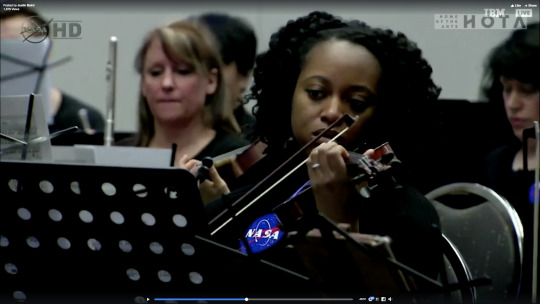
What advice would you give your younger self?
It’s ok to not have everything figured out at every step of your career journey. Work hard, do your best, and enjoy the journey as it unfolds. You’ll inevitably have some surprises along the way, and regardless of whether they are welcome or not, you’re guaranteed to learn something.
Do you have a favorite metaphor or analogy that you use to describe what you do, and its impact, to those outside of the scientific community?
I see jigsaw puzzles as a good illustration of how different members of a science community play a diverse set of roles to work through different problems. Each member is often working on their own image within the greater puzzle, and although it might take them years of work to see their part of the picture come together, each image in the greater puzzle is essential to completing the whole thing. During my career, I’ll work on a section of the puzzle, and I hope to connect my section to others nearby, but we may not finish the whole puzzle. That’s ok, however, because we’ll hand over the work that we’ve accomplished to the next generation of scientists, and they will keep working to bring the picture to light. This is how I try to think about my role in climate science – I hope to contribute to the field in some way; the best thing about what I have done and what I will do, is that someone else will be able to build on my work and keep helping humanity come to a better understanding of our Earth system.
What is a course that you think should be part of required school curriculum?
Time and project management skills – I think students tend to learn these skills more organically from their parents and teachers, but in my experience I stumbled along and learned these skills through trial and error. To successfully balance all the different projects that I support now, I have to be organized and disciplined, and I need to have clear plans mapped out, so I have some idea of what’s coming and where my attention needs to be focused.
Another course not specifically related to my field is personal financial management. I was interested in personal finance, and that helped me to seek out information (mainly through various blogs) about how to be responsible with my home finances. There is a lot of information out there, but making sure that students have a solid foundation and know what questions to ask early on will set them to for success (and hopefully fewer mistakes) later on.
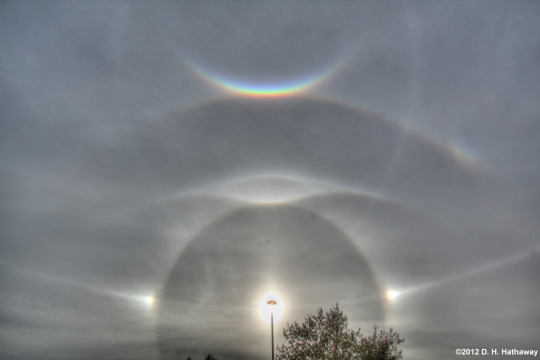
What’s the most unexpected time or place that your expertise in climate science and/or algorithms came in handy?
I think an interesting part of being an atmospheric scientist and a known sky-watcher is that I get to notice beautiful moments in the sky. I remember being on a trip with friends and I looked up (as I usually do), and I was gifted with a gorgeous sundog and halo arc. It was such a beautiful moment, and because I noticed it, my friends got to enjoy it too.
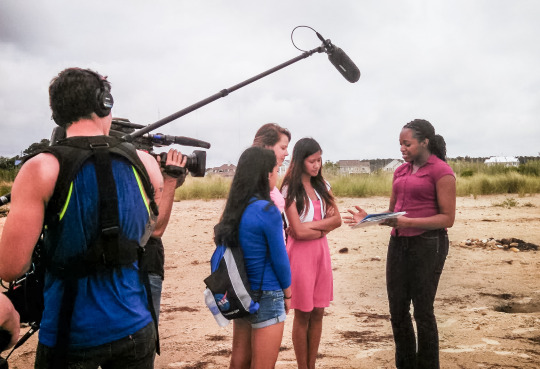
Can you share a photo or image from a memorable NASA project you’ve worked on, and tell us a little bit about why the project stood out to you?
I absolutely loved being on the PBS Kids TV Show, SciGirls for their episode SkyGirls! This featured a NASA program called Students’ Clouds Observations On-Line (S’COOL). It was a citizen science program where students from around the globe could take observations of clouds from the ground that coincided with satellite overpasses, and the intention was to help scientists validate (or check) the accuracy of the code they use to detect clouds from satellite measurements. I grew up watching educational programming from PBS, so it was an honor to be a science mentor on a TV show that I knew would reach children across the nation who might be interested in different STEM fields. In this photo, the three young women I worked with on the show and I are talking about the different types of clouds.
To stay up to date on Yolanda's mission and everything going on in NASA Earth science, be sure to follow NASA Earth on Twitter and Facebook.
🌎 If you're looking for Earth Day plans, we have live events, Q&As, scavenger hunts and more going on through April 24. Get the details and register for our events HERE.
Make sure to follow us on Tumblr for your regular dose of space: http://nasa.tumblr.com.
#Earth#Earth Day#earth science#NASA#climate#weather#atmosphere#space#international space station#STEM#women in STEM#awesome women#climate change#home planet#earth love
21K notes
·
View notes
Note
there are southern lights?!
YES THERE ARE MY FRIEND AURORA AUSTRALIS THE DAWN OF THE SOTUH. CAUSE THEY'RE IN THE SOUTH
they're the exact same thing as the northern lights: a phenomenon in the atmosphere due to the interaction of the solar winds against the earth's magnetic field and gases up there
HOWEVER
they differ in one major way however: pink as a color shows up more commonly than in the north!
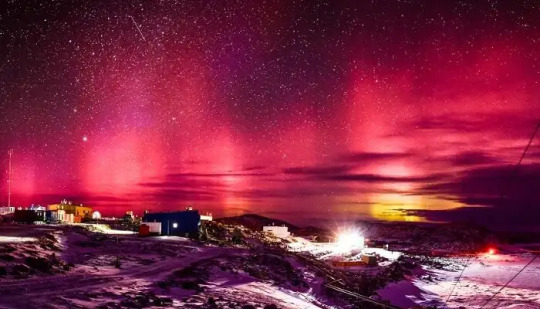
LOOK AT HOW PRETTY
the classic green aurora is of course still around it is one of the more common colors but pink shows up just a bit more frequently than in the north!
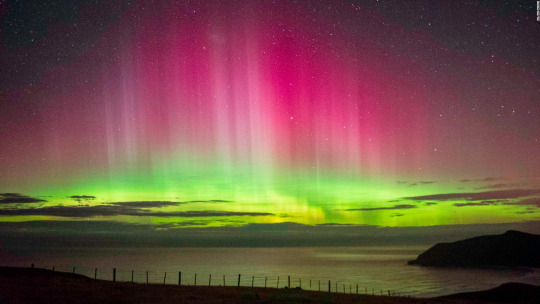
unobtainable watermelon
they are absolutely stunning and one of the best ways to see them is on a cruise (ehhhhhhhh) or going to antarctica!!!!!
i'm obsessed with these funky little things like look at nature's neon lights she's so pretty. they're absolutely beautiful and it is on my bucket list to see both of them
#mine#dontbeanaskbutt#PLEEEEEASE I LOVE THE SOUTHERN LIGHTS#THEY'RE LITERALLY SO STUNNING#also where's that image of the crystal or rock structure that looks like watermelon rock candy that's what the above reminds me of#astronomy#science#stem#space#SPAAACE#EVEN THO THIS IS OUR OWN ATMOSPHERE#earth science#text#northern lights#southern lights
8K notes
·
View notes
Photo


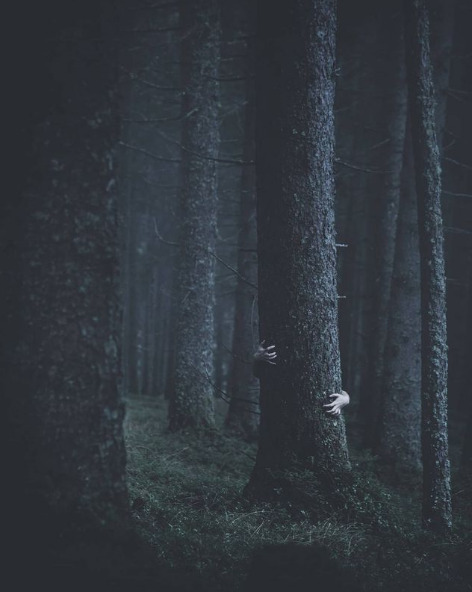

photography by underjordiske
#photography#landscape#travel#explore#earth#nature#horse#mountains#foggy#magic#folk#trees#dark#shadow#pagan#norse#slavic#vikig#celtic#atmosphere#atmospheric black metal#pagan metal#ritual
6K notes
·
View notes
Photo

“CLOUDS” by IngoW.
#clouds#sky#earth atmosphere#environmental protection#environment#opot#my photography#artists on tumblr#black and white photography#original photography on tumblr#original photographers#photographers on tumblr#photographers#youmecore.tumblr.com
36 notes
·
View notes
Link
“(...) experts argue that the lava is not blue, instead the volcano contains large deposits of pure sulphur which gives off the incredible “neon blue” colour as it burns. When sulphur is spewed out at such high temperatures and pressures, its lava glows blue.”
“According to a Paris-based photographer, Olivier Grunewald, it is when the sulphuric gases come out of the vents or cracks in the volcano and get in contact with the oxygen-rich atmospheric air that the light is produced. This is the reason behind the blue flame which flows down the slope as burning hot liquid sulphur, after the sulphur gases condense, giving the illusion of lava flowing after a volcanic eruption.”
#blue lava#volcanism#lava#sulphur#temperature#plasma#oxygen#light#energy#color#nature#atmosphere#earth#physics#geophysics#heat#fire#blue flame#magnetic field
379 notes
·
View notes
Text
Earth may have been a 'water world' 3 billion years ago: Study
Earth may have been a ‘water world’ 3 billion years ago: Study
[ad_1]
Earth may have been a water world covered by global ocean 3.2 billion years ago according to a new study.
The study which has published in Nature Geoscience suggests that in its early years, Earth may have looked like a post-apocalyptic water world.
Also read: Earth has a new ‘mini-moon’ about the size of a car
In order to gather data, researchers analyzed more than 100 rock samples from…
View On WordPress
#Earth#Earth atmosphere#earth from space#evolution of Earth#oxygen#Science & Technology News#wionews.com
0 notes
Text
the chad rocky from project hail mary vs the virgin any other humanoid alien design
#u guys dont understand this book has permanently raised my expectations for any media set in space. what do you MEAN your super mysterious#planet shares almost the same exact atmosphere as earth. why are the aliens eho evolved completely independently human shaped#where is your creativity!!!! your originality!!!!!!!!#sigh. SIGH#project hail mary#mine#andy weir#hes just so. so god at worldbuilding and character creation i fear no book will live up to it#why would i watch something about normalpilled aliens who have the same exact biology as humans and breathe the same air when i could read#ROCKY who lives in AMMONIA and EATS OUT THE SAME HOLE HE SHITS#he talks in music! he doesnt see! he has five armlegs and he does jazz hands when hes excited! ideal form#crabs really ARE peak evolution
132 notes
·
View notes
Note
The pillarmen using Dio's head as a soccer ball.
your going into orbit, you stupid vampire

#esidisi would launch dio out of earth’s atmosphere before they could start#jjba#esidisi#dio#sketch extravaganza
58 notes
·
View notes
Text
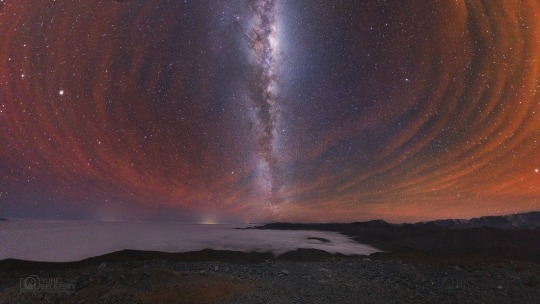
Airglow over the Atacama
One of the several rising steps that climbs to the main cordillera of the Andes through the driest desert on Earth resembles a beach abutting onto a sea of clouds below and provides the backdrop for this gorgeous photo of airglow above the southern skies with our galaxy in the sky above. The ripples are caused by atmospheric waves and produce a completely different pattern to those in the skies above the Tibetan Plateau I shared once before (see http://on.fb.me/1MC62j0).
It's not just auroras that fill our sky with eerie light. The weaker phenomenon in the photo is called airglow (aka nightglow), and unlike the aurora, which is focussed towards the poles by Earth's magnetic field, it can be seen from anywhere on Earth with luck and a dark sky or long exposure photo. Both phenomena arise from excited atmospheric atoms, but with different solar sources for the excitation energy. Like aurorae, airglow can be patchy and shift on a scale of minutes across the night sky. It is also present during the day but hidden in the glare.
Aurorae are due to high speed collisions with the high energy particles in the solar wind, usually during a coronal mass ejection that is pointed towards our planet and funnelled down our world's field lines. Airglow arises from high energy components of ordinary sunlight, in this case short wave ultraviolet and X-Rays. Several mechanisms combine in the lower reaches of space to produce this glow.
Between 80 and 100 Km up from the surface, oxygen atoms get chemically excited and ionised (the electrons are stripped off from the nuclei by the energy). They then react with hydroxyl molecules (OH) to form water, or recombine into O2 and start to glow green from both chemically stimulated energy and the decay of those atoms excited by cosmic rays (just once in my life I think I've had the blue flash of Cherenkov radiation in one eye reported by astronauts). They only occur at high altitude because lower down the nitrogen in the atmosphere quenches the reaction. Other types of atom also recombine to contribute to the effect, such as nitrogen and oxygen forming nitric oxide (NO), emitting a photon of light as they do so.
It was first identified by the Swede Angstrom in 1868, and subsequent laboratory studies have shown the chemical pathways that create the light as an energetic by product of the photochemical reactions. It limits the sensitivity of ground based telescopes at visible wavelengths, and is one of the reasons space telescopes are so useful to astronomers, as they can see faint objects normally masked by airglow. It usually appears bluish green, and seems brightest about ten degrees above the horizon. Only part of the layer of air that forms our bubble glows, too high up and the atoms are too tenuous to combine, too low and their density means that the energy is dissipated by collisions rather than photochemical reactions.
While it is normally quite weak, and the photographer tells me that this picture has an unusual intensity for the phenomenon, he states that a friend obtained similar results when shooting from the same place in the same direction.
Sometime in the next couple of days, we'll put up a photo of airglow from space, so you can see the shimmering band that encircles our wonderful Blue Marble.
Loz
Image credit: Yuri Beletsky (Carnegie Las Campanas Observatory) via APOD.
http://bit.ly/1JGwDta
http://bit.ly/1VByYuy
http://bit.ly/1JSJrcK
450 notes
·
View notes
Note
Bec is a good boy. We love Bec.
The narration said he's her best friend and a good doggy. That's canon!
And also a weapon of mass destruction, who could end the world on a whim in at least three ways. I counted.
#asks#act 3#full liveblog#in case anyone asks: 1. open portal to the sun's core on earth 2. portal the atmosphere into space 3. fetch a black hole neutron star etc#obviously a LOT more ways if you remove size limitations to his powers that's just if he can only affect jade-sized objects or smaller
60 notes
·
View notes
Photo



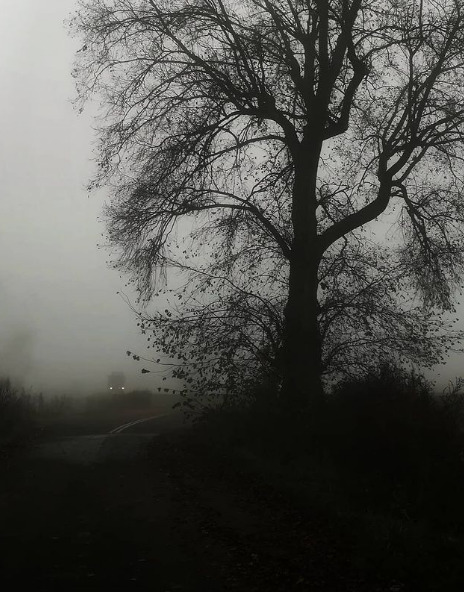

photography by weekendowy turysta
#photography#poland#polska#nature#forest#dark#foggy#shadow#atmosphere#ritual#magic#landscape#travel#explore#earth#darknature#trees#pagan
3K notes
·
View notes
Photo


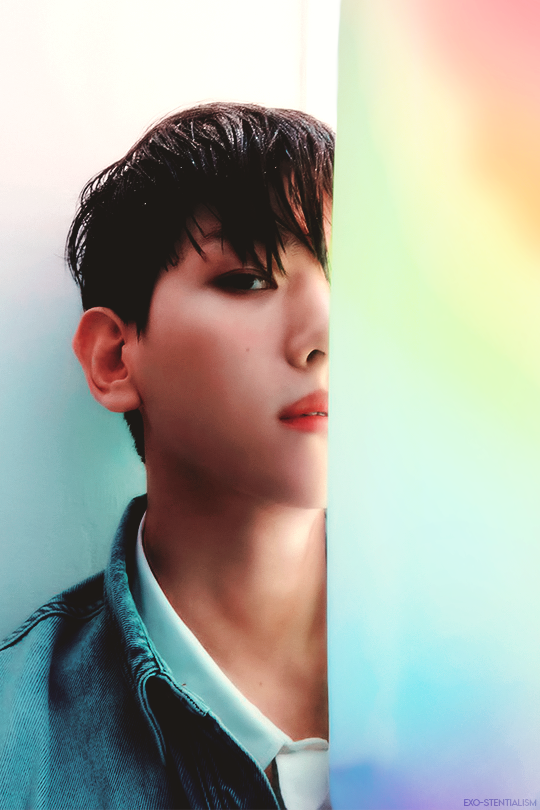


BAEKHYUN ✶ BAMBI
#exo#exosnet#baekhyun#byun baekhyun#bambi#mine#edit#baekhyun edit#i....... i may have gone overboard#these are so heavily edited omg#but i can't help it#rainbows in all their forms are one of the most striking atmospheric phenomenons#and like... the most stunning man on earth#covered in rainbows#like... is there anything more sublime??
440 notes
·
View notes
Text


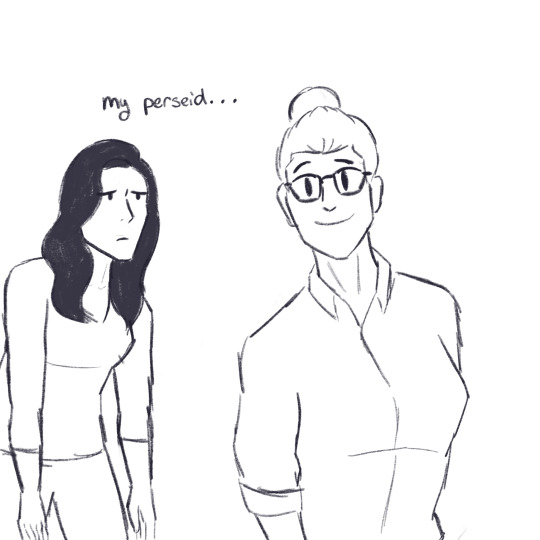
Y E E E E T
inspired by this comment on twitter
#want some more meteor facts?#well you're getting em anyway since i'm still on this#an estimated 25 million meteroids micrometeoroids and other space debris enter our atmosphere every day#meteors can burn different colors depending in what it's made up of or covered in#orange-yellow is sodium#yellow is iron#violet is calcium#blue-green is magnesium#and red is atmospheric nitrogen and oxygen#it's theorized (by NASA) that the turbulent ionized wake of a meteor interacts with earth's magnetic field generating pulses of radio waves#supergirl#supercorp#lena#lena luthor#kara#kara danvers#space girlfriends#my art
146 notes
·
View notes
Text
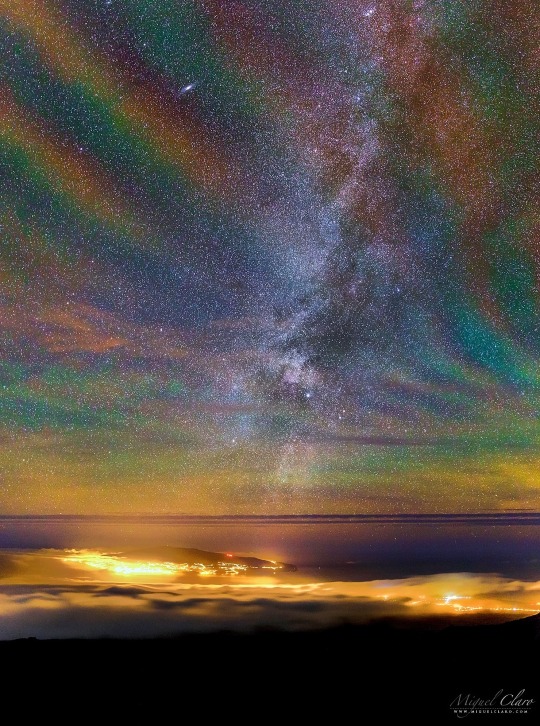
A rainbow airglow! Air glows all of the time, but it is usually hard to see. A disturbance, like a storm, may cause noticeable rippling in the Earth's atmosphere. These gravity waves are oscillations in air, just like the ripples created when a rock is thrown in calm water. Makes sense right? But where do the colors come from? The deep red glow likely originates from OH molecules excited by ultraviolet light from the Sun. The orange and green airglow is likely caused by sodium and oxygen atoms slightly higher up. A spectacular sky is visible through this airglow, with the central band of our Milky Way Galaxy running up the image center, and M31, the Andromeda Galaxy, visible near the top left.
Image Credit & Copyright: Miguel Claro (TWAN); Rollover Annotation: Judy Schmidt
#astronomy#space#science#universe#air glow#airglow#Milky Way#oxygen#hydrogen#sodium#atoms#atmosphere#bands#ripples#galaxy#earth#follow#like#reblog#the first star#the first starr#thefirststar#thefirststarr#apod#nasa#tumblr#pic of the day
260 notes
·
View notes